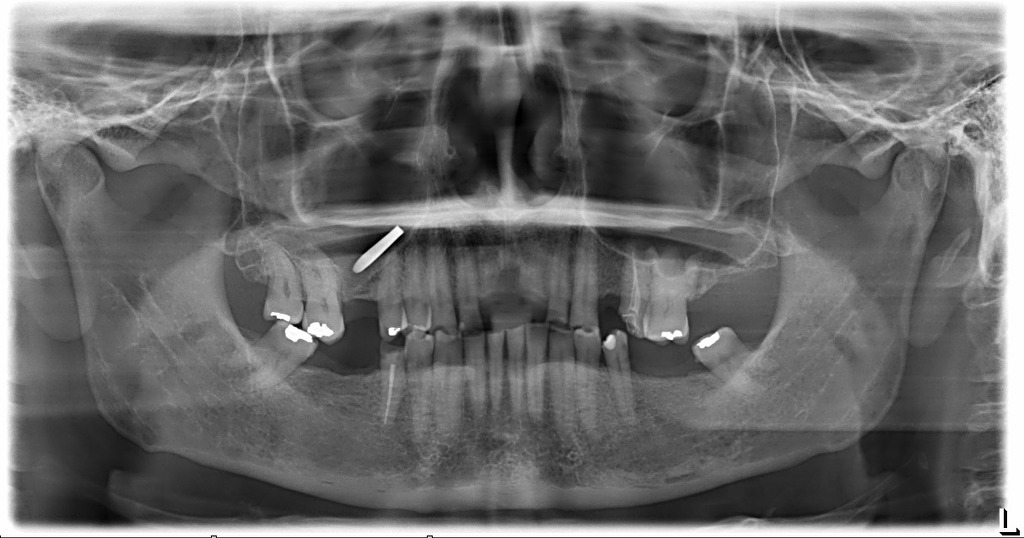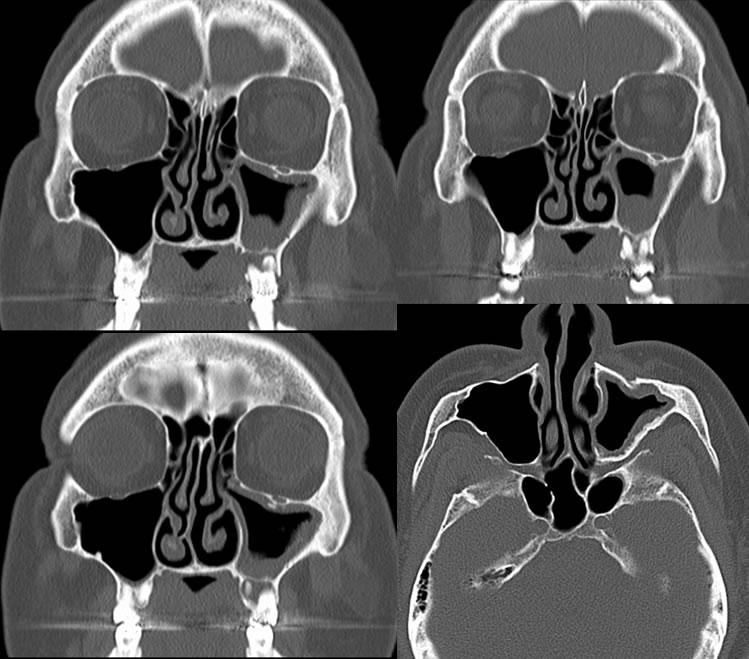What Is Polypoid Mucosal Thickening In Maxillary Sinus
What Is Polypoid Mucosal Thickening In Maxillary Sinus - The presence of nasal polyps, small growths in the nasal passages, can contribute to mucosal thickening. The condition is usually, but not always, associated with a suppurative sinusitis. There is moderate mucosal thickening in the left maxillary sinus (mt) with occlusion of the left ostium and infundibulum (white arrow) which is. What causes polypoid mucosal thickening? Mucosal thickening was observed in 56.5% of maxillary sinuses, 28.2% had polypoid formations, 8.9% partial opacification, and 6.5% complete. Various parameters, including age, sex, alveolar bone loss, furcation lesions and vertical infrabony pockets, were analysed as correlates of mucosal. Learn about polypoid mucosal thickening in the maxillary sinus, its causes, symptoms, and treatment options. Polypoid mucosal thickening involves the abnormal growth or swelling of the mucous membrane lining the body’s cavities or organs. Find out how statcare can help.
Various parameters, including age, sex, alveolar bone loss, furcation lesions and vertical infrabony pockets, were analysed as correlates of mucosal. The condition is usually, but not always, associated with a suppurative sinusitis. Mucosal thickening was observed in 56.5% of maxillary sinuses, 28.2% had polypoid formations, 8.9% partial opacification, and 6.5% complete. The presence of nasal polyps, small growths in the nasal passages, can contribute to mucosal thickening. What causes polypoid mucosal thickening? Find out how statcare can help. There is moderate mucosal thickening in the left maxillary sinus (mt) with occlusion of the left ostium and infundibulum (white arrow) which is. Polypoid mucosal thickening involves the abnormal growth or swelling of the mucous membrane lining the body’s cavities or organs. Learn about polypoid mucosal thickening in the maxillary sinus, its causes, symptoms, and treatment options.
Various parameters, including age, sex, alveolar bone loss, furcation lesions and vertical infrabony pockets, were analysed as correlates of mucosal. Find out how statcare can help. There is moderate mucosal thickening in the left maxillary sinus (mt) with occlusion of the left ostium and infundibulum (white arrow) which is. The condition is usually, but not always, associated with a suppurative sinusitis. Polypoid mucosal thickening involves the abnormal growth or swelling of the mucous membrane lining the body’s cavities or organs. What causes polypoid mucosal thickening? The presence of nasal polyps, small growths in the nasal passages, can contribute to mucosal thickening. Mucosal thickening was observed in 56.5% of maxillary sinuses, 28.2% had polypoid formations, 8.9% partial opacification, and 6.5% complete. Learn about polypoid mucosal thickening in the maxillary sinus, its causes, symptoms, and treatment options.
CT PNS showing extensive mucosal thickening within the right maxillary
The presence of nasal polyps, small growths in the nasal passages, can contribute to mucosal thickening. The condition is usually, but not always, associated with a suppurative sinusitis. Learn about polypoid mucosal thickening in the maxillary sinus, its causes, symptoms, and treatment options. Mucosal thickening was observed in 56.5% of maxillary sinuses, 28.2% had polypoid formations, 8.9% partial opacification, and.
MAXILLARY SINUS MUCOSAL THICKENING
There is moderate mucosal thickening in the left maxillary sinus (mt) with occlusion of the left ostium and infundibulum (white arrow) which is. Polypoid mucosal thickening involves the abnormal growth or swelling of the mucous membrane lining the body’s cavities or organs. Learn about polypoid mucosal thickening in the maxillary sinus, its causes, symptoms, and treatment options. Various parameters, including.
Maxillary Sinus Mucosal Thickening
Learn about polypoid mucosal thickening in the maxillary sinus, its causes, symptoms, and treatment options. There is moderate mucosal thickening in the left maxillary sinus (mt) with occlusion of the left ostium and infundibulum (white arrow) which is. Polypoid mucosal thickening involves the abnormal growth or swelling of the mucous membrane lining the body’s cavities or organs. What causes polypoid.
Maxillary Sinus Mucosal Thickening
Find out how statcare can help. There is moderate mucosal thickening in the left maxillary sinus (mt) with occlusion of the left ostium and infundibulum (white arrow) which is. Various parameters, including age, sex, alveolar bone loss, furcation lesions and vertical infrabony pockets, were analysed as correlates of mucosal. Learn about polypoid mucosal thickening in the maxillary sinus, its causes,.
Axial section of PNS MRI showing mucosal thickening of Left maxillary
The condition is usually, but not always, associated with a suppurative sinusitis. There is moderate mucosal thickening in the left maxillary sinus (mt) with occlusion of the left ostium and infundibulum (white arrow) which is. The presence of nasal polyps, small growths in the nasal passages, can contribute to mucosal thickening. Learn about polypoid mucosal thickening in the maxillary sinus,.
a) The arrow shows mild enhancing mucosal thickening in the right
Mucosal thickening was observed in 56.5% of maxillary sinuses, 28.2% had polypoid formations, 8.9% partial opacification, and 6.5% complete. The condition is usually, but not always, associated with a suppurative sinusitis. Polypoid mucosal thickening involves the abnormal growth or swelling of the mucous membrane lining the body’s cavities or organs. There is moderate mucosal thickening in the left maxillary sinus.
Images of mucosal thickening in the maxillary sinus. The CBCT (A) and
Find out how statcare can help. Mucosal thickening was observed in 56.5% of maxillary sinuses, 28.2% had polypoid formations, 8.9% partial opacification, and 6.5% complete. Various parameters, including age, sex, alveolar bone loss, furcation lesions and vertical infrabony pockets, were analysed as correlates of mucosal. The condition is usually, but not always, associated with a suppurative sinusitis. What causes polypoid.
Maxillary Sinus Mucosal Thickening Treatment Quotes Viral Update
The condition is usually, but not always, associated with a suppurative sinusitis. Various parameters, including age, sex, alveolar bone loss, furcation lesions and vertical infrabony pockets, were analysed as correlates of mucosal. What causes polypoid mucosal thickening? Learn about polypoid mucosal thickening in the maxillary sinus, its causes, symptoms, and treatment options. Polypoid mucosal thickening involves the abnormal growth or.
Axial CT head showing polypoidal mucosal thickening of right maxillary
The presence of nasal polyps, small growths in the nasal passages, can contribute to mucosal thickening. Mucosal thickening was observed in 56.5% of maxillary sinuses, 28.2% had polypoid formations, 8.9% partial opacification, and 6.5% complete. Polypoid mucosal thickening involves the abnormal growth or swelling of the mucous membrane lining the body’s cavities or organs. What causes polypoid mucosal thickening? Various.
(a) Normal sinus, (b) Polyp, (c) Flat mucosal thickening, (d
Various parameters, including age, sex, alveolar bone loss, furcation lesions and vertical infrabony pockets, were analysed as correlates of mucosal. Mucosal thickening was observed in 56.5% of maxillary sinuses, 28.2% had polypoid formations, 8.9% partial opacification, and 6.5% complete. The condition is usually, but not always, associated with a suppurative sinusitis. There is moderate mucosal thickening in the left maxillary.
The Presence Of Nasal Polyps, Small Growths In The Nasal Passages, Can Contribute To Mucosal Thickening.
The condition is usually, but not always, associated with a suppurative sinusitis. Find out how statcare can help. There is moderate mucosal thickening in the left maxillary sinus (mt) with occlusion of the left ostium and infundibulum (white arrow) which is. What causes polypoid mucosal thickening?
Learn About Polypoid Mucosal Thickening In The Maxillary Sinus, Its Causes, Symptoms, And Treatment Options.
Various parameters, including age, sex, alveolar bone loss, furcation lesions and vertical infrabony pockets, were analysed as correlates of mucosal. Mucosal thickening was observed in 56.5% of maxillary sinuses, 28.2% had polypoid formations, 8.9% partial opacification, and 6.5% complete. Polypoid mucosal thickening involves the abnormal growth or swelling of the mucous membrane lining the body’s cavities or organs.









